Visiting Zhangjiajie National Forest Park; The Avatar Mountains of China
If you’ve ever seen the Avatar Movie, you’ll remember the Avatar mountains. Did you know that they’re (almost) a real thing? James Cameroon visited China in his youth and was inspired by the Zhangjiajie National Forest Park, this ultimately gave birth to those floating Avatar mountains in the movie!
Well, after my trip to Tibet was cancelled, I made it my mission to go and check out Zhangjiajie National Forest Park, and see the Avatar mountains myself. And it was such a good decision, just SPECTACULAR!
But outside of China, the Zhangjiajie National Park isn’t that well known. I hope my blog post can help inspire you to go and check it out. So let’s have a look at how to visit:
Table of contents
- What is the Zhangjiajie National Forest Park??
- Where is the Zhangjiajie National Park?
- How Do You Get to Zhangjiajie National Forest Park??
- Is it really the inspiration behind the Avatar mountains?
- Zhangjiajie National Forest Park Entrance Ticket Price:
- How Best to Experience the Zhangjiajie National Forest Park:
- How About A Tour Guide?
- Visiting the Avatar Mountains; My experience at the Zhangjiajie National Forest Park
- Where should I sleep at Zhangjiajie?
- FINAL THOUGHTS ON Visiting Zhangjiajie National Forest Park?
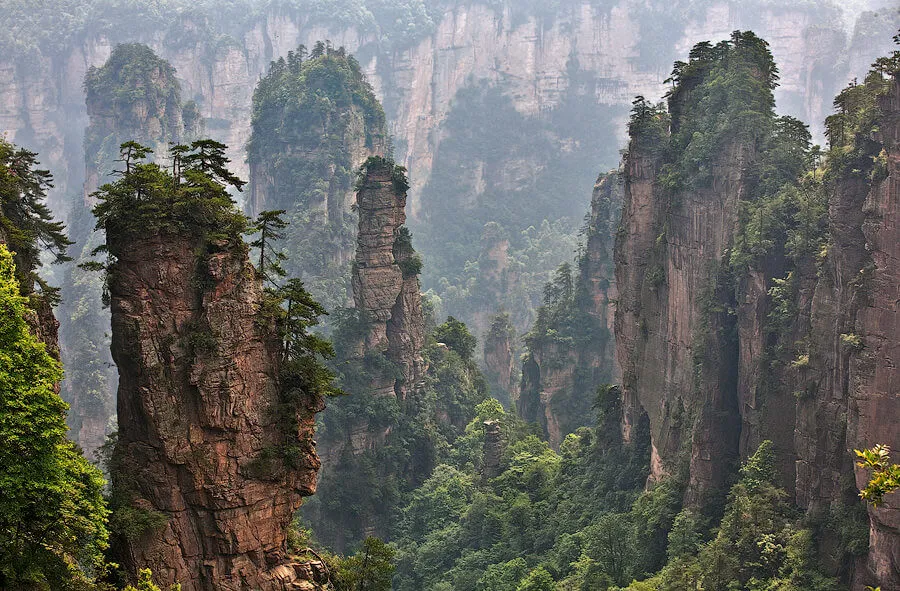
What is the Zhangjiajie National Forest Park??
The Zhangjiajie National Forest Park is a UNESCO World Heritage site (Strictly speaking, the World Heritage site is Wulingyuan, of which Zhangjiajie is a part of). It’s a 200+ square mile national park full of karst pillars of sandstone. The pillars often appear to be floating due to the low cloud cover that flows in.
It was made famous by James Cameroon admitting taking inspiration from it for Avatar AND also that crazy youtube clip of wing-suit flyers zipping through a circular gap in the mountains. Madness.
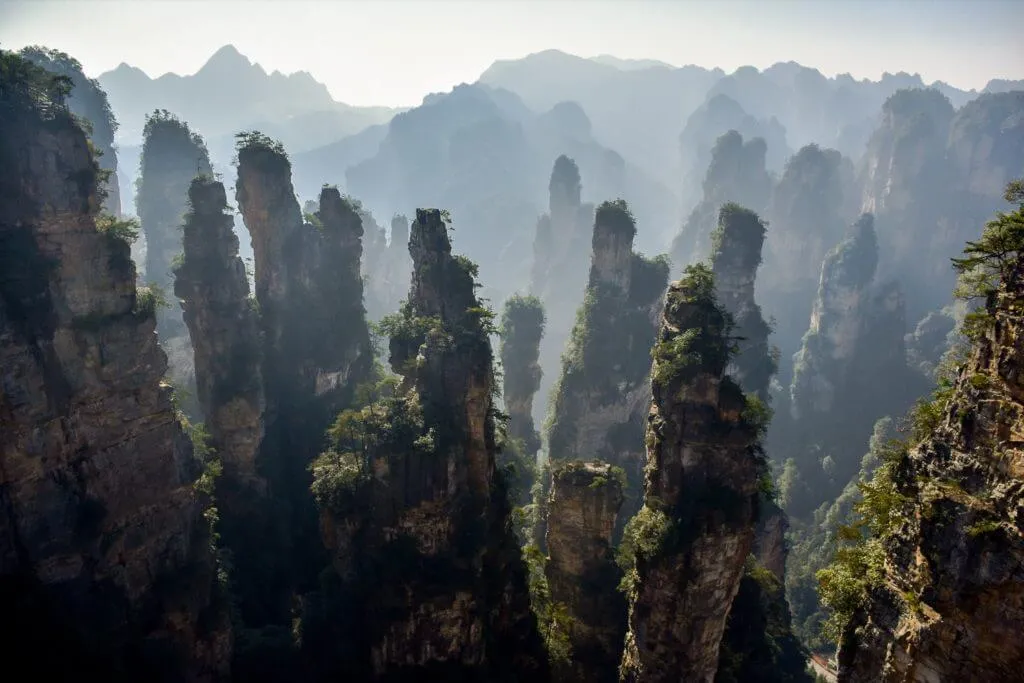
Where is the Zhangjiajie National Park?
It’s right slap bang in the center of China. From Shanghai, as you see in the google map below, it’s about 1300km inland.
How Do You Get to Zhangjiajie National Forest Park??
The easiest way to get to Zhangjiajie is the recently renamed Zhangjiajie Hehua Airport, just 40km away (formerly Dayong Airport).
You can base yourself in Zhangjiajie town and early in the morning hop on the bus or taxi for an hour to reach the national park entrance.
You can also get there, from the rest of China, via Guilin, Changsa or Chengdu. If you’re taking trains, head to Changsa, Guangzhou or Kunming and from there they have local trains to Zhangjiajie.
NOTE: There are LOTS of park entrances, you want the ‘Zhangjiajie park entrance’.

Is it really the inspiration behind the Avatar mountains?
Yup, really. And actually the photo below, Heavenly Pillar, is THE actual inspiration! He filmed the mountains there. And the Chinese Government is delighted, the tourists are FLOCKING there now!

Zhangjiajie National Forest Park Entrance Ticket Price:
It used to be cheap, but since it became famous, they only allow a purchase of a 4 day ticket. Which isn’t cool, because 1 day is probably enough.
¥248 ($39) for a high season pass & ¥145 for a low season ($25). The prices do cover all the internal buses though, which is great.
There are various trams, elevators, and cable cars spread through the huge park, each charging between 40-70RMB ($6-$14 to use).
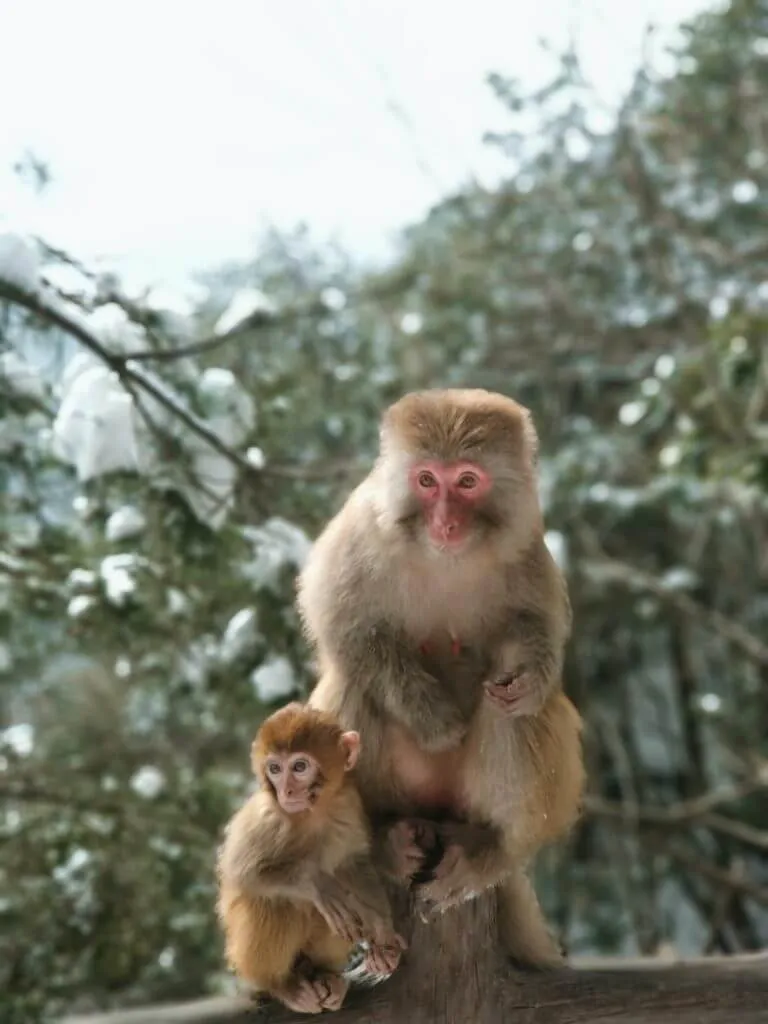
How Best to Experience the Zhangjiajie National Forest Park:
It’s huge, so plan ahead! Or just use my blog post. First of all, unless you’re a hardcore Chinese national park lover, one full day, or 2 normal days is enough.
The park can be broken down into 2 levels – upper and lower. And each level has a lot of different hot-spots, a bus can take you from a to b.
If you want to move between the 2 levels, that is also possible. Either hike it (an hour or so of STEEP climbing), or take one of the 3 cable cars ($13 a pop).
When you arrive, get a map from the ticket office and choose the route and view points you want to reach. Personally, I would start on the lower, take a few bus stops in ,then hike to the higher and do the same. Then pay for the cable car down. Done!
Here is the best map online for the park.
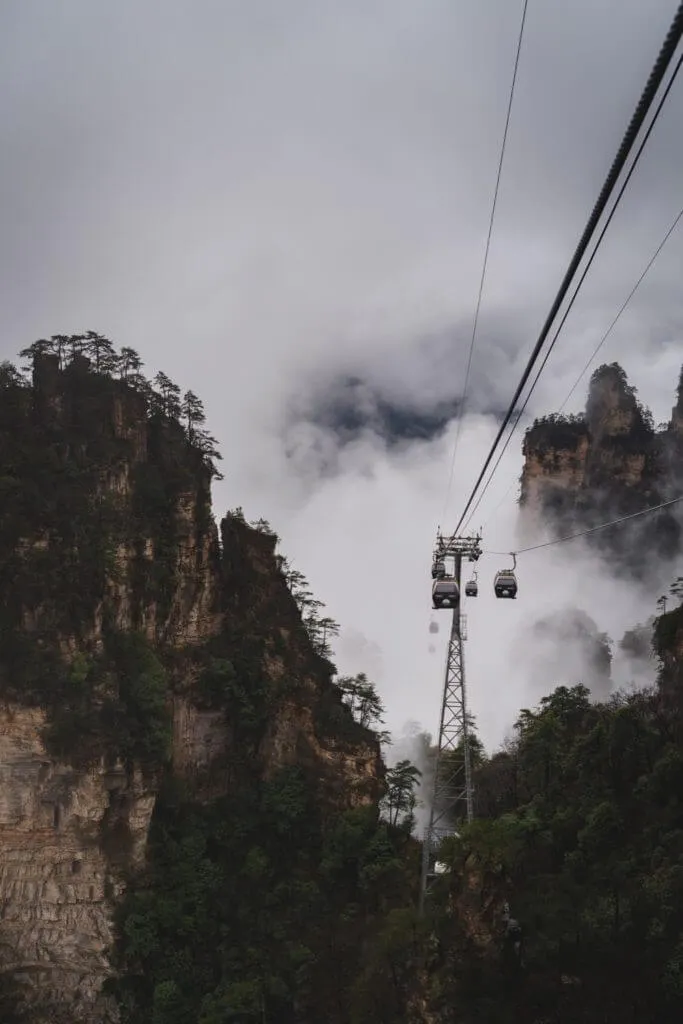
How About A Tour Guide?
If I got back, I’ll get a guide. It’s massive and confusing. They’re not available at the park entrance, but ask around in Zhangjiajie town and you can find them. The only issue is most people don’t speak English. Eeek.
Or a cheaper day tour at $145 is even better!
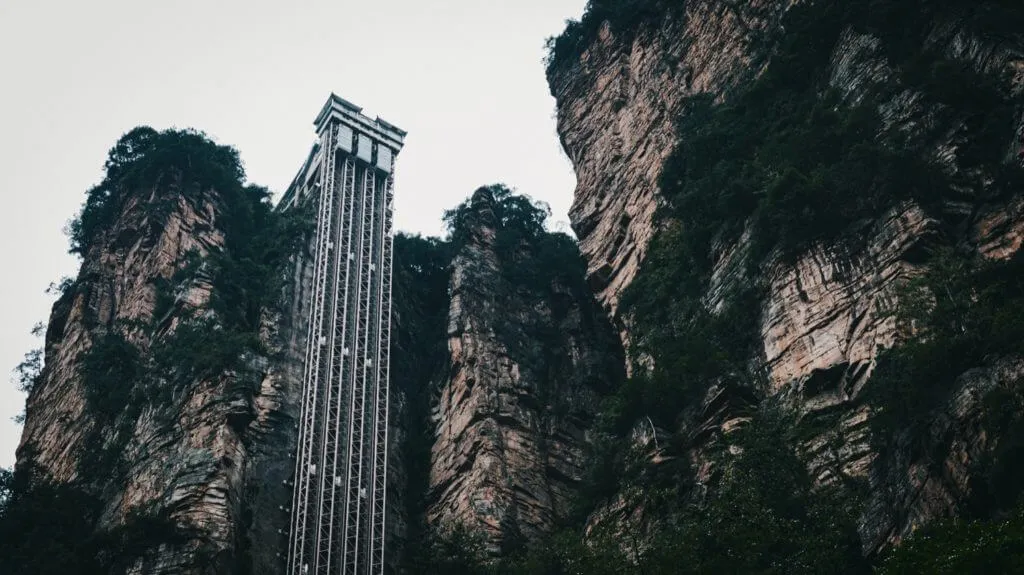
Visiting the Avatar Mountains; My experience at the Zhangjiajie National Forest Park
Feet throbbing, calves burning, and hamstrings tighter than ever before but very, very satisfied with a great day backpacking. Today, and yesterday for that matter, I walked about 10km around Zhangjiajie National Park in Hunan Province, China, otherwise known as the ‘Avatar Mountains’ and it is spectacular.
This was my 3rd UNESCO site in China that week so I’m feeling pretty lucky to be honest although the pain I’m currently in from all that hiking is perhaps my payment instead. This one though, you have to earn it. Not easy to get to the area of China, and then A LOT of hiking when you’re there. No pain no gain, right?
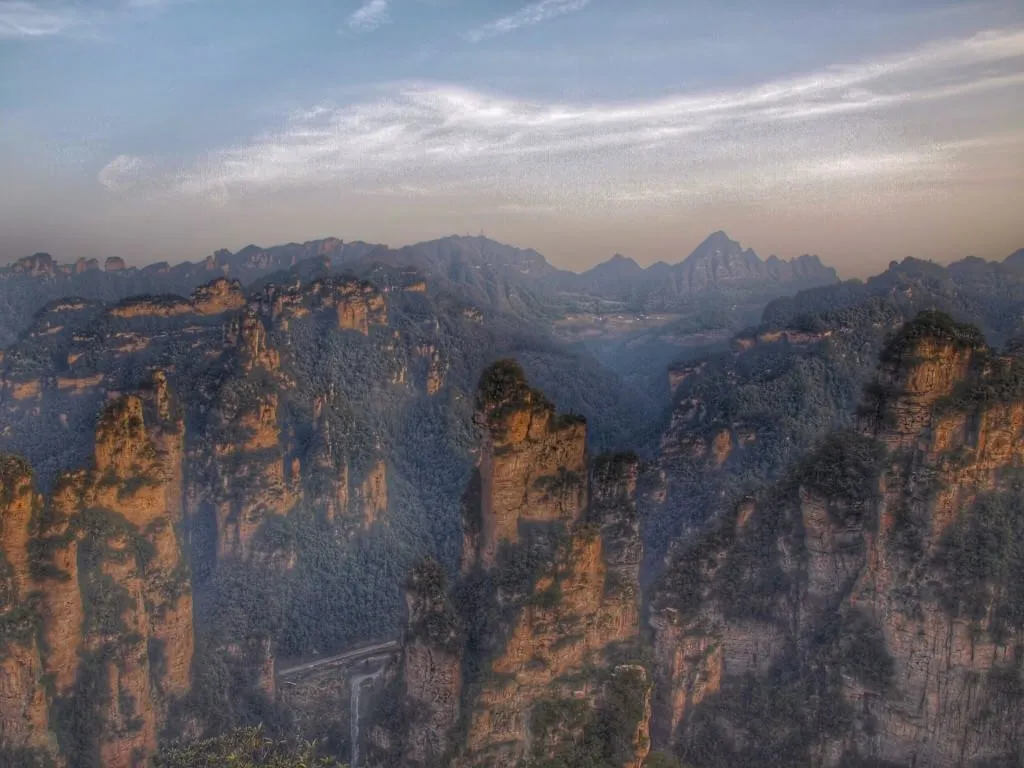
Guilin to Zhangjiajie
We arrived from Guilin on the night train, then found a dingy cheap hotel near to the park. From there we set off super early in the morning and we were the first people in the park, so we had the whole place to ourselves. I’d massively recommend you guys do the same, especially if it’s summer high season, since Avatar was launched this place has gone mad. So mornings are your best shot.

2 days was enough
The area is absolutely HUGE, and people spend days and days coming back. For me, with my low attention span, we came for two days. Solid hiking every day. We decided to ignore the cable cars as much as we could and hike everywhere, super difficult but an amazing experience. Don’t try to ‘do it’ in a day, there is simply too many awesome things to see and do, it’s honestly one of the best places I’ve ever visited, so two days as an absolute minimum in my opinion.

Avatar Hallelujah Mountains
Since the humongous success of the Avatar movie, the park has been renamed the ‘Avatar Hallelujah Mountains’ and the tacky Chinese gift stores are rammed full of avatar merchandise. They’ve even commissioned a replica of one of the dragon/bird creatures who appear to have crashed into the cliff.
And due to everyone not being physically fit enough to clamber amongst the gorgeous mountains, you can pay twenty bucks and be carried around the Zhangjiajie National Forest Park, madness but true, check it out.
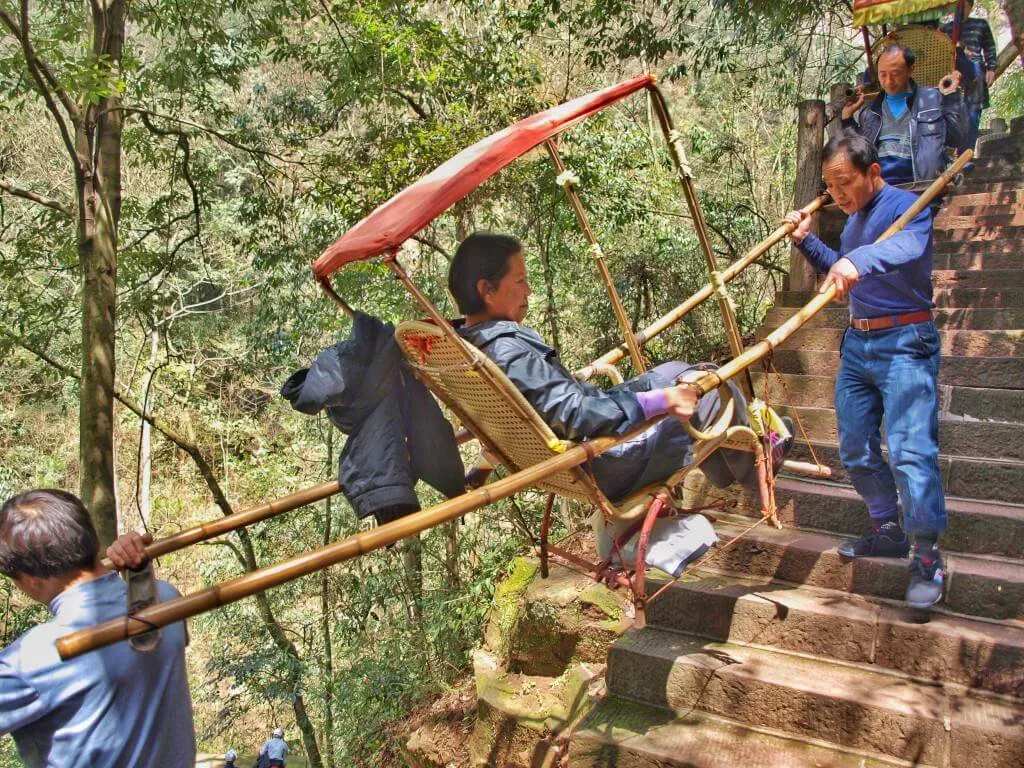
If you go for 2 days, which I’d recommend, you really have to be careful about selecting your route or you’ll spend all day backtracking, or worse – getting lost. Maps are available outside for 5RMB ($0.80) and ask advice about routes from your English-speaking accommodation.
Bring snacks AND WATER!
Bring some snacks and enough water for lunch because sometimes it’s tough to find places to buy (reasonably priced) food. And you could be hours deep into a trek when hunger strikes. I’m not one for carrying a bag full of stuff on my day trips, but this is one exception, oh and leave the flip-flops at home. This place needs proper footwear. Sneakers are fine, hiking boots would be a winner, but I never travel with those personally.
Also, make sure you’re leaving the park by 6pm when the park’s buses stop.
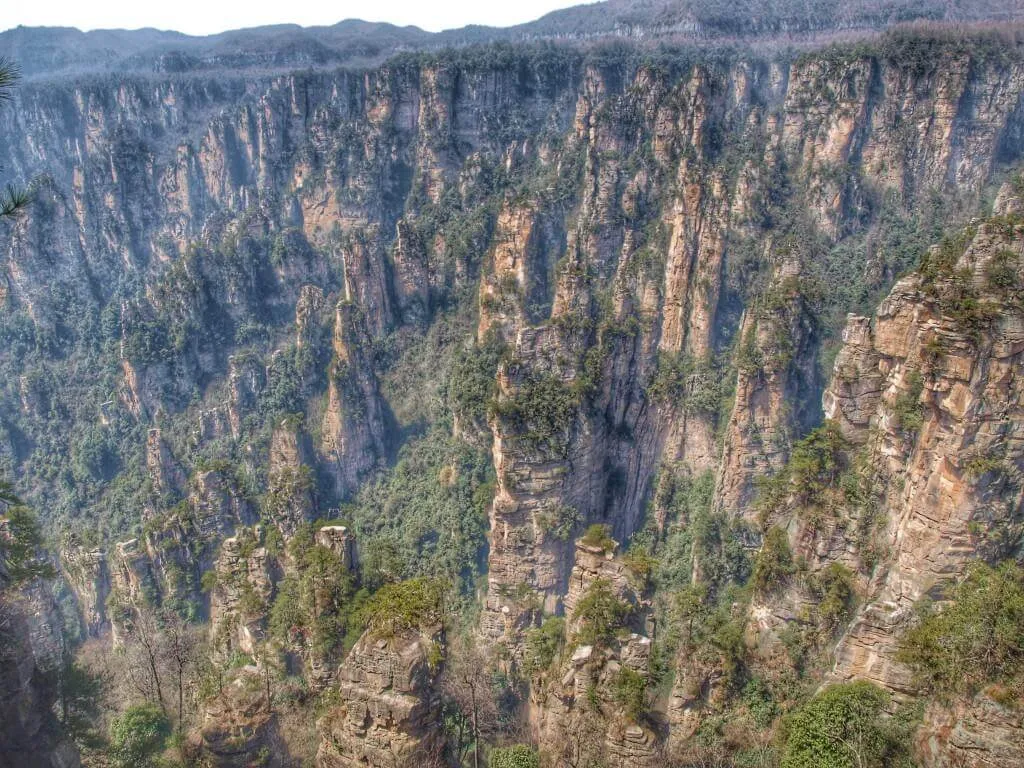

World’s First Natural Bridge
Oh, and if you’re stuck about which place to see then the World’s First Natural Bridge (its official name) has the coolest scenery of all. So don’t miss out on that, this is it below. Breathtaking!
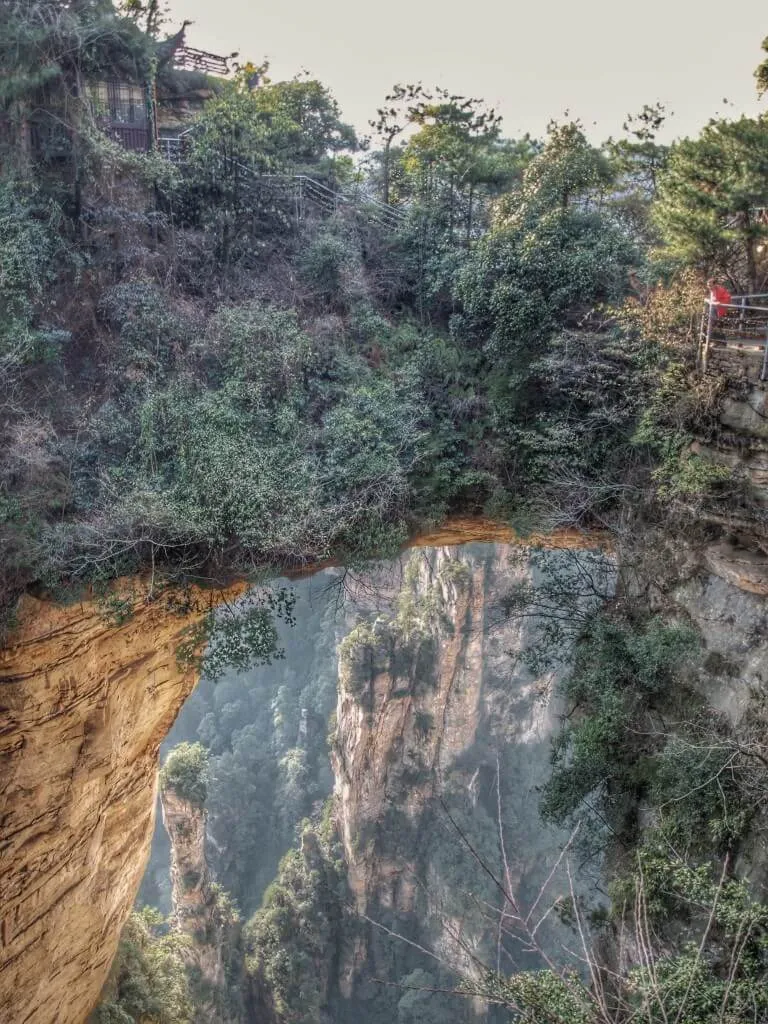
Where should I sleep at Zhangjiajie?
That’s a question which no blog or guidebook really answers well so let me clear it up.
You want to sleep in Zhangjiajie village ideally (known as Wuling Yuan), unless budget isn’t an issue then Zhangjiajie city is fine, but it’s quite far from the park. Also, you can stay in the park but it’s quite expensive and you don’t have any options to explore the town or choose different places to eat.
In WulingYuan, there are lots of places to stay including a couple of affiliated YHA members which charge only 45RMB ($7) per bed.
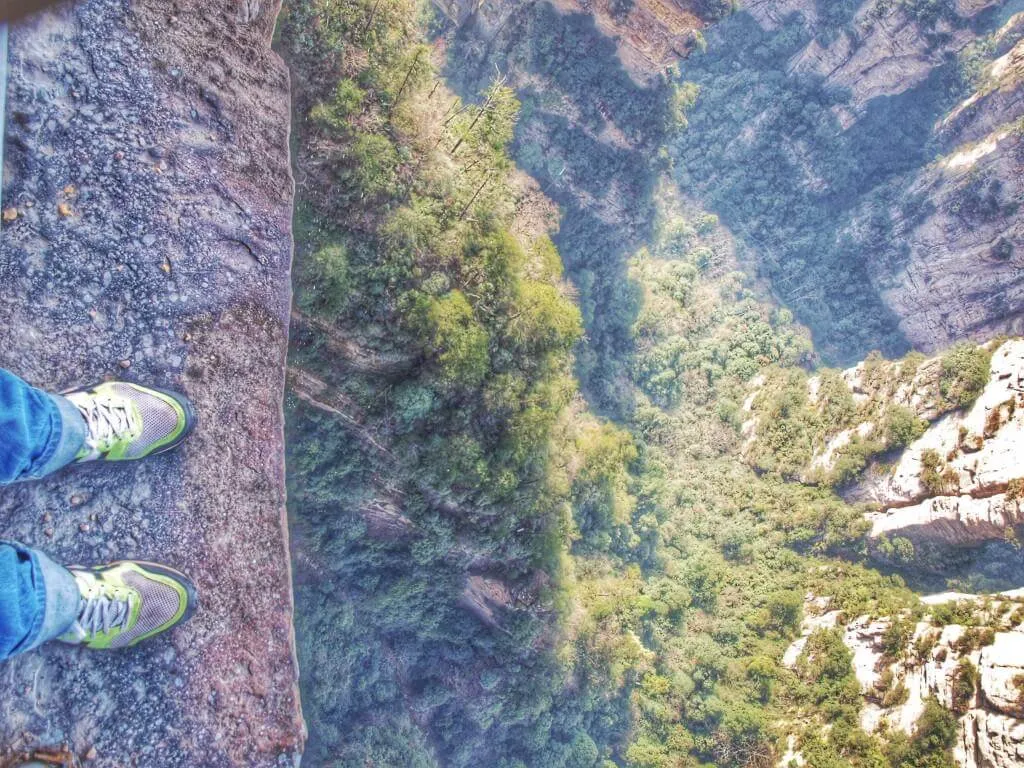
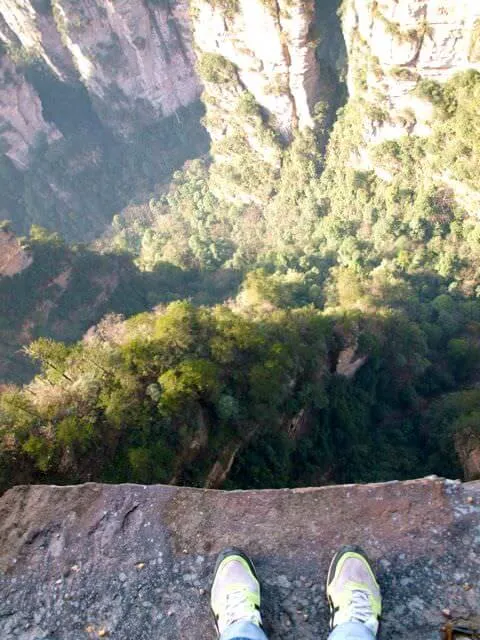
FINAL THOUGHTS ON Visiting Zhangjiajie National Forest Park?
Outside of China, the Zhangjiajie National Park isn’t that well known. BUT IT SHOULD BE! Make the effort, I did it back before you could easily take care of your China health declaration on the internet, but the visa stuff is getting easier every year too. I hope my blog post can help inspire you to go and check it out. If you don’t have your necessary visa, take care of that first! Online services like iVisa make that a lot easier. So let’s have a look at how to visit:

Remember, never travel without travel insurance! And never overpay for travel insurance!
I use HeyMondo. You get INSTANT quotes. Super cheap, they actually pay out, AND they cover almost everywhere, where most insurance companies don't (even places like Central African Republic etc!). You can sign-up here. PS You even get 5% off if you use MY LINK! You can even sign up if you're already overseas and traveling, pretty cool.
Also, if you want to start a blog...I CAN HELP YOU!
Also, if you want to start a blog, and start to change your life, I'd love to help you! Email me on johnny@onestep4ward.com. In the meantime, check out my super easy blog post on how to start a travel blog in under 30 minutes, here! And if you just want to get cracking, use BlueHost at a discount, through me.
Also, (if you're like me, and awful with tech-stuff) email me and my team can get a blog up and running for you, designed and everything, for $699 - email johnny@onestep4ward.com to get started.
Do you work remotely? Are you a digital nomad/blogger etc? You need to be insured too.
I use SafetyWing for my digital nomad insurance. It covers me while I live overseas. It's just $10 a week, and it's amazing! No upfront fees, you just pay week by week, and you can sign up just for a week if you want, then switch it off and on whenever. You can read my review here, and you can sign-up here!








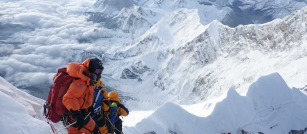

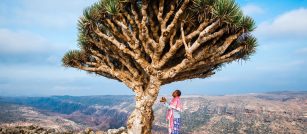


 As you know, blogging changed my life. I left Ireland broke, with no plan, with just a one-way ticket to Thailand
and no money. Since then, I started a blog, then a digital media company, I've made
more than $1,500,000 USD, bought 4 properties and visited (almost) every country in the world. And I did it all from my laptop as I
travel the world and live my dream. I talk about how I did it, and how you can do it too, in my COMPLETELY FREE
Ebook, all 20,000
words or so. Just finish the process by putting in your email below and I'll mail it right out to you immediately. No spam ever too, I promise!
As you know, blogging changed my life. I left Ireland broke, with no plan, with just a one-way ticket to Thailand
and no money. Since then, I started a blog, then a digital media company, I've made
more than $1,500,000 USD, bought 4 properties and visited (almost) every country in the world. And I did it all from my laptop as I
travel the world and live my dream. I talk about how I did it, and how you can do it too, in my COMPLETELY FREE
Ebook, all 20,000
words or so. Just finish the process by putting in your email below and I'll mail it right out to you immediately. No spam ever too, I promise!
